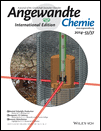Expedient Synthesis of Fused Azepine Derivatives Using a Sequential Rhodium(II)-Catalyzed Cyclopropanation/1-Aza-Cope Rearrangement of Dienyltriazoles†
This work was supported by the NSF (CAREER 0643264 to R.S.) and a Research Scholar Grant from the American Cancer Society (RSG-09-017-01-CDD to R.S.). R.S. is a Camille Dreyfus Teacher Scholar. We are grateful to the NSF for a graduate fellowship to E.E.S., to the FRQNT (B3) for a postdoctoral scholarship to V.N.G.L., and to Abbott, Eli Lilly, and Roche for financial support. We thank A. DiPasquale for solving the crystal structures of 2 a and 4 (displayed with CYLView), supported by NIH Shared Instrumentation Grant (S10-RR027172).
Graphical Abstract
A general method for the formation of fused dihydroazepines from 1-sulfonyl-1,2,3-triazoles bearing a tethered diene is reported. The process involves an intramolecular cyclopropanation of an α-imino rhodium(II) carbenoid, leading to a transient 1-imino-2-vinylcyclopropane intermediate which rapidly undergoes a 1-aza-Cope rearrangement to generate the products in moderate to excellent yields. Ts=4-toluenesulfonyl.
Abstract
A general method for the formation of fused dihydroazepine derivatives from 1-sulfonyl-1,2,3-triazoles bearing a tethered diene is reported. The process involves an intramolecular cyclopropanation of an α-imino rhodium(II) carbenoid, leading to a transient 1-imino-2-vinylcyclopropane intermediate which rapidly undergoes a 1-aza-Cope rearrangement to generate fused dihydroazepine derivatives in moderate to excellent yields. The reaction proceeds with similar efficiency on gram scale. The use of catalyst-free conditions leads to the formation of a novel [4.4.0] bicyclic heterocycle.





